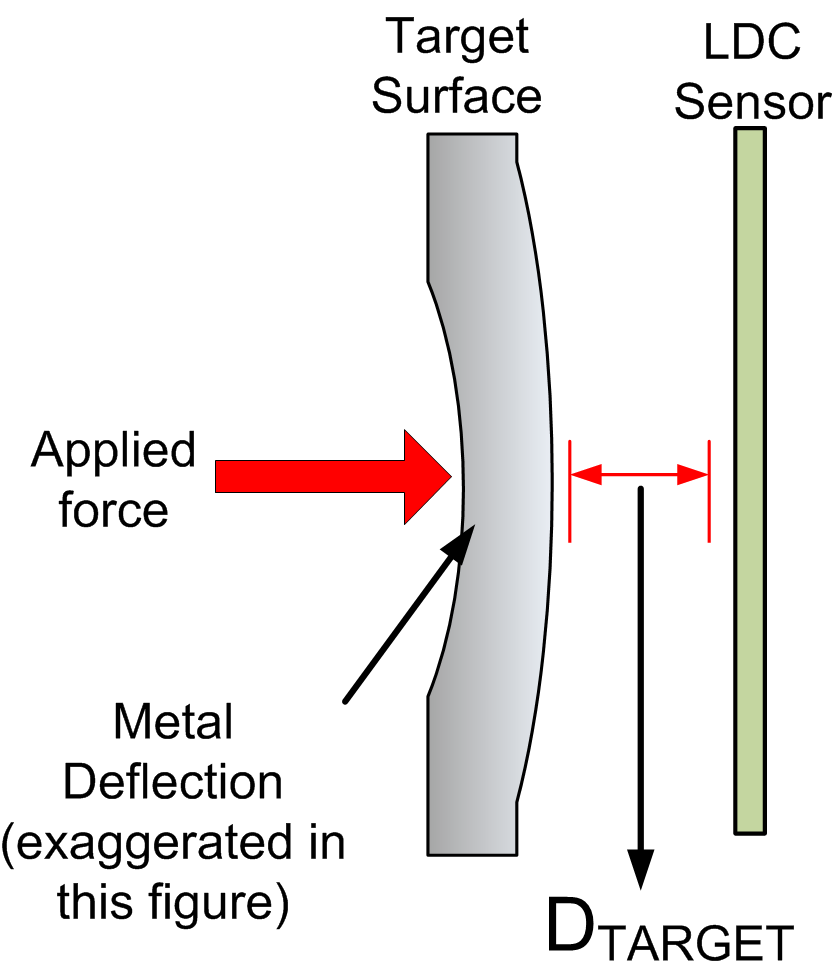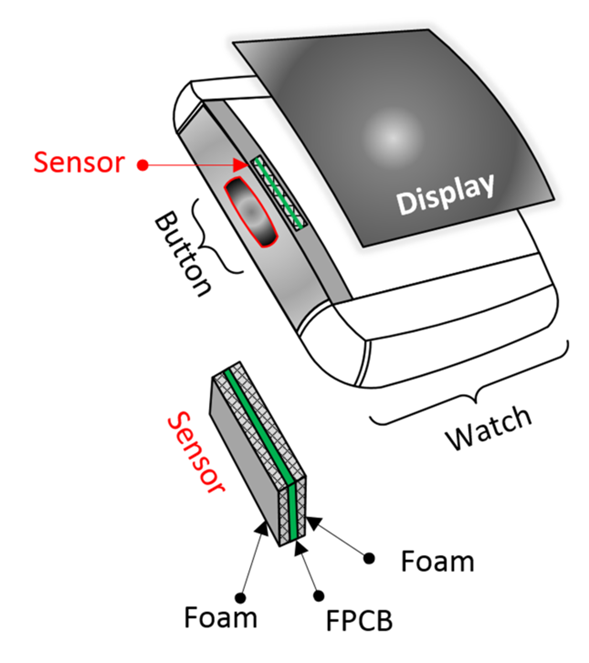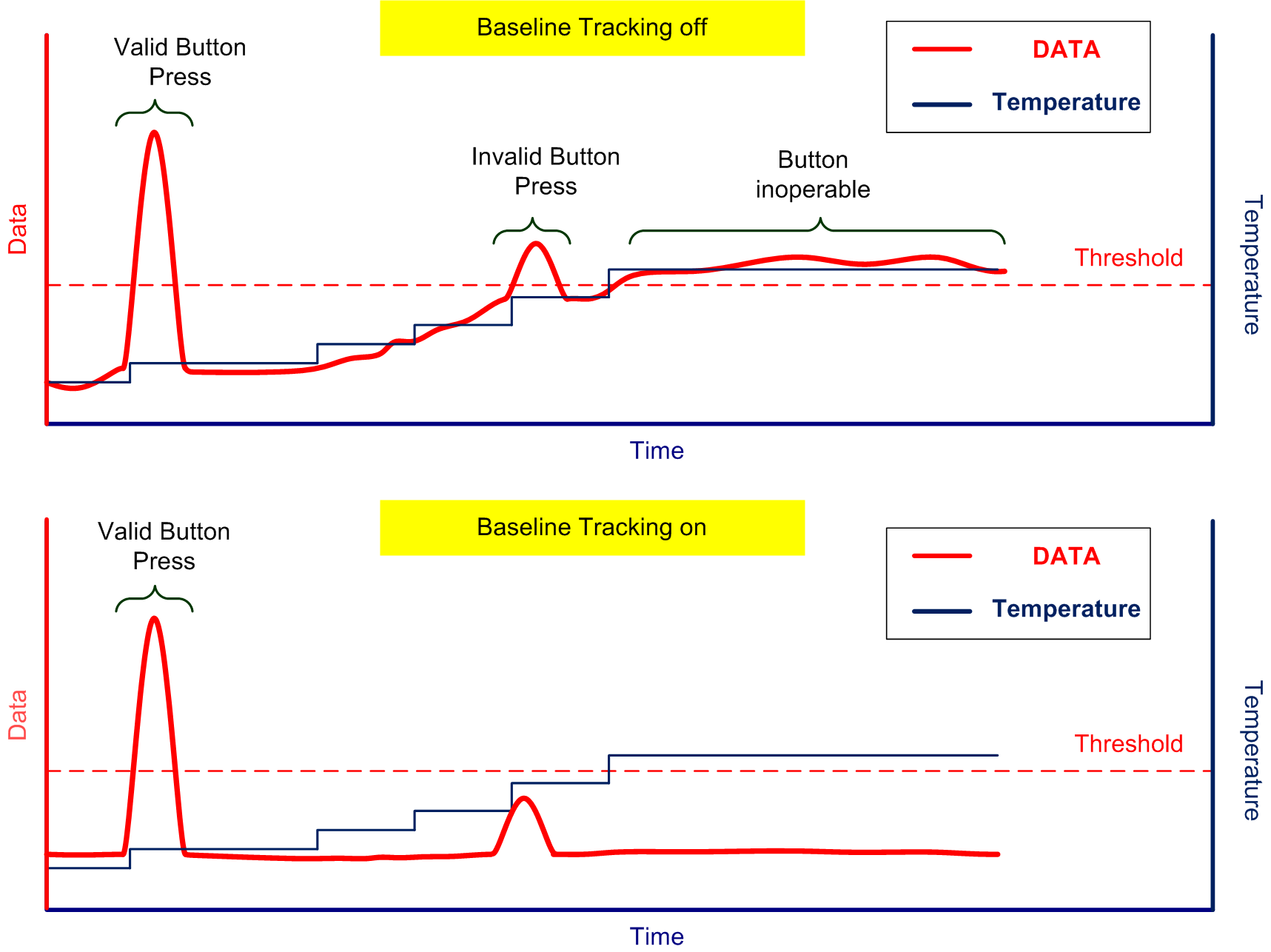SNAA307A April 2017 – June 2021 LDC2112 , LDC2114 , LDC3114 , LDC3114-Q1
Application Brief
A key selling point for wearable devices is the Ingress Protection or IP rating. The IP rating reflects a device’s resistance to particulates and liquid damage, that many users relate to the device’s overall reliability and ruggedness. Eliminating cutouts in the device enclosure can help achieve a good IP rating. However, most wearable devices rely on mechanical buttons which require cutouts in the enclosure making the device harder to seal off and more likely to receive a lower IP rating. In addition, mechanical buttons require the use of moving parts, metallic contacts, and gaskets which present long term reliability issues, increased costs, and inferior immunity to environmental factors.
Inductive touch buttons offer a compelling alternative to mechanical buttons as they enable cutout free enclosure designs that allow the device to receive higher IP ratings. In addition, Inductive Touch buttons are physically robust as they are gasket-less and have no moving parts. Since Inductive Touch buttons respond directly to the amount of force applied on the button surface, they can be used with gloves and even under water.
Inductive Touch buttons are easy to implement and have very few components. The three main components of inductive touch button technology are the inductive sensor, target surface, and an inductance to digital converter (LDC).
 Figure 1-1 Inductive Touch Components
Figure 1-1 Inductive Touch ComponentsWhen force is applied on the target surface, the material deflects slightly (typically <0.1 µm with a 1 N force), reducing the distance between the inductive sensor and the target surface (DTARGET). The LDC measures this change in DTARGET as a reduction in the inductance of the sensor (Δ Sensor Inductance ∝ Δ DTARGET). When the force is removed the button surface returns to its original shape.
Incorporating Inductive Touch buttons in a wearable not only makes the device more likely to receive a higher IP rating but also enables a wide range of industrial designs which were previously not achievable. Inductive Touch buttons can be implemented in many ways, but the recommended mechanical implementations for Inductive Touch buttons implemented with the LDC3114 is the slot-based design shown in Figure 1-2:
 Figure 1-2 Recommended Mechanical Design
Figure 1-2 Recommended Mechanical DesignIn this design the sensor FPCB is encased in compressible foam (front and back) and inserted into a slot milled into the enclosure wall. Once the sensor has been inserted, the slot can be sealed from the top allowing the display to be affixed to the watch enclosure. The button position can be indicated by a protrusion or a depressed feature in the exposed enclosure wall which allows a user to easily locate the button. Haptics can be used to provide a tactile response to the button press.
A wearable device’s overall ruggedness and reliability depends on a multitude of different factors other than liquid and particulate ingression protection. Wearable devices are often subjected to adverse environmental and physical operating conditions. The LDC3114 addresses the challenging reliability requirements of wearable devices by employing a built-in base line tracking algorithm that compensates for changes in the environment like temperature and humidity, and unwanted changes in the target distance (DTARGET) caused by physical dents or drops. Figure 1-3 shows how base line tracking eliminates slow changes in the inductance data due to temperature shifts.
 Figure 1-3 Baseline Tracking
Figure 1-3 Baseline TrackingA vital component of a wearable device’s success is the battery life. In order to conserve battery life wearables have very strict power consumption requirements. The LDC3114 features a low power mode which can optimize power consumption to be as low as 6 µA.
The LDC3114 can operate autonomously without any processor intervention leading to further power savings. With a typical wearable battery capacity of 200 mAh, the LDC3114 can support a device shelf/ship life greater than 42 months (3.5 years).
An important advantage to using Inductive Touch Buttons implemented using the LDC3114 is that the device reliability and ruggedness can be improved without adding to the system complexity, size, or cost. The LDC3114 emulates the functionality of a mechanical button by signaling a button press using an easy to use high/low output pin. The output pin state changes when a certain amount of force is applied on the button surface. The amount of force needed to trigger a button press and the output pin polarity can be configured individually for each of the four LDC3114 channels. All of these features are encapsulated in a very small 1.6 mm x 1.6 mm WCSP-16 package. In addition, Inductive Touch sensor design utilizes existing manufacturing processes and materials which makes integration into a manufacturing flow convenient and cost effective.
Alternative Device Recommendations
LDC2112 and LDC2114 are an alternative inductive touch solution, they meet the requirements for wearable devices they do not support the maximum sampling rate of the LDC3114 but instead offer a max sampling rate of 80SPS. The previous generation of general purpose multichannel LDC devices (LDC1XXX) can also be used to implement inductive touch buttonsTable 1-1(1), but they may not meet the demanding requirements of a wearable application (for example, low power consumption and processor-less operation). LDC161X devices are general purpose inductance to digital converters that can operate from 3.3 V up to 5 V.
| Device | Optimized Parameter | Performance Trade-Off |
|---|---|---|
| LDC1614 | 2.7 V ≤ VDD ≤ 3.6 V | Higher power consumption, lower maximum sensor frequency, and needs a μcontroller |
| LDC1612 | 2.7 V ≤ VDD ≤ 3.6 V | Higher power consumption, lower maximum sensor frequency, and needs a μcontroller |
| LDC211x | >50 second button timeout | Raw data mode unavailable, reduced max scan rate |